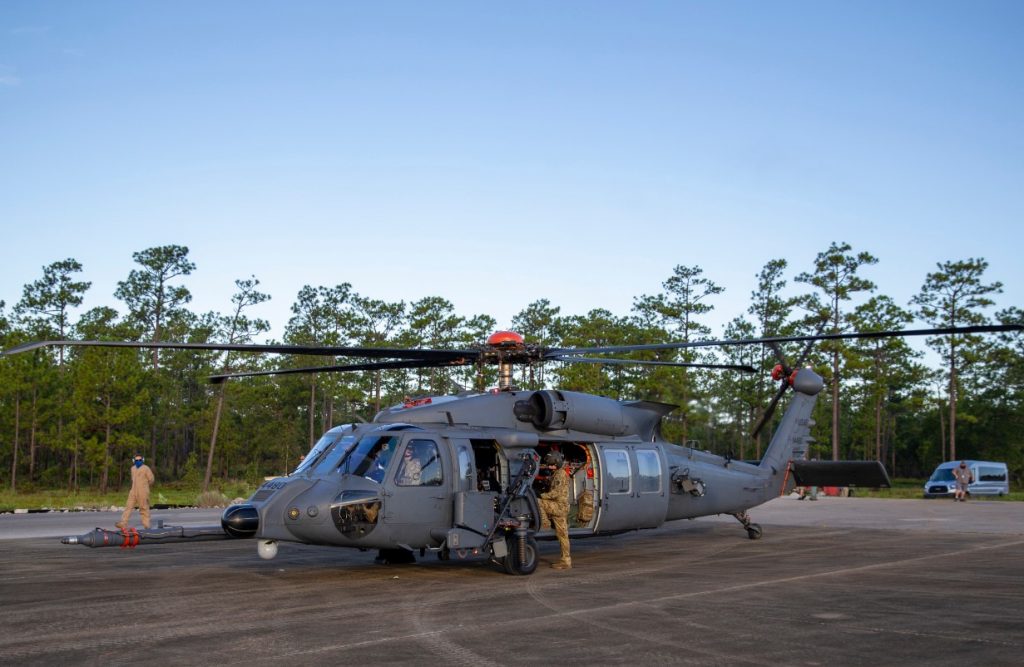The US Air Force’s newest helicopter, the HH-60W Jolly Green II combat search and rescue helicopter, has started live-fire testing its three primary weapons at the Eglin Air Force Base range.
The 413th Flight Test Squadron testers and their partners performed the testing over a three-week period that started on August 17.
The three weapons tested were: the GAU-2, a 7.62mm gatling gun with a 3,000 rounds per minute fire rate, the GAU-18, a .50 caliber legacy machine gun with a 650-800 round fire rate, and the GAU-21, a .50 caliber newly-designed machine gun with a 950-1100 round fire rate.
“It was great to see all the team’s planning and hard work finally pay off to get us to execution and gather this initial live-fire data,” said Maj. Christopher Hull, 413th FLTS chief test engineer.
The first HH-60W built, commonly referred to as Whiskey 1 within the unit, was used for the ground testing.

Whiskey 1 contains specialized test instrumentation that allows, aircraft manufacturer, Sikorsky, to monitor hundreds of parameters during the flights and envelope expansion testing. That specialized instrumentation allowed the testers to record the stress and strains in the aircraft caused by firing the weapons.
The helicopter’s guns can rotate independently providing an almost 360-degree firing arc. This created a unique challenge for the squadron’s engineers to develop test and safety plans not typically encountered with fixed wing aircraft. Details such as blade rotation, human factors and instrumentation were examined and controlled for before the actual testing could begin according to Hull.
The Jolly Green’s aircrew not only operated the weapons, they were part of the evaluation as well. The crew wore special instrumentation that measured the weapon’s blast effects on their bodies. That data is part of a larger DOD study to better understand the effects of weapon blast on the human body, specifically as it relates to traumatic brain injury. The goal is to reduce injuries to service members who operate such weapons.
The ground testing phase is just the first step in the evaluation of the weapons. Data from the tests will be evaluated by the Air Force’s Non-Nuclear Munitions Safety Board, who will then clear the HH-60W for live fire flight testing. That testing is currently scheduled for later in 2020.
The US Air Force plans to buy 108 helicopters to replace the Pave Hawks, which perform critical combat search and rescue and personnel recovery operations for all US military services.
A total of 22 HH-60W are on order under Low Rate Initial Production (LRIP) contracts that were awarded following the Milestone C decision by the Air Force in 2019.
The HH-60W is based on the UH-60M Black Hawk and customized for the US Air Force’s rescue mission. The aircraft hosts a new fuel system that nearly doubles the capacity of the main fuel tank on a UH-60M Black Hawk, giving the Air Force crew extended range and more capability to rescue those injured in the battle space. The HH-60W specification drives more capable defensive systems, vulnerability reduction, weapons, cyber-security, environmental, expanded adverse weather sensor capabilities, and more comprehensive net-centric requirements than currently held by the HH-60G.



























